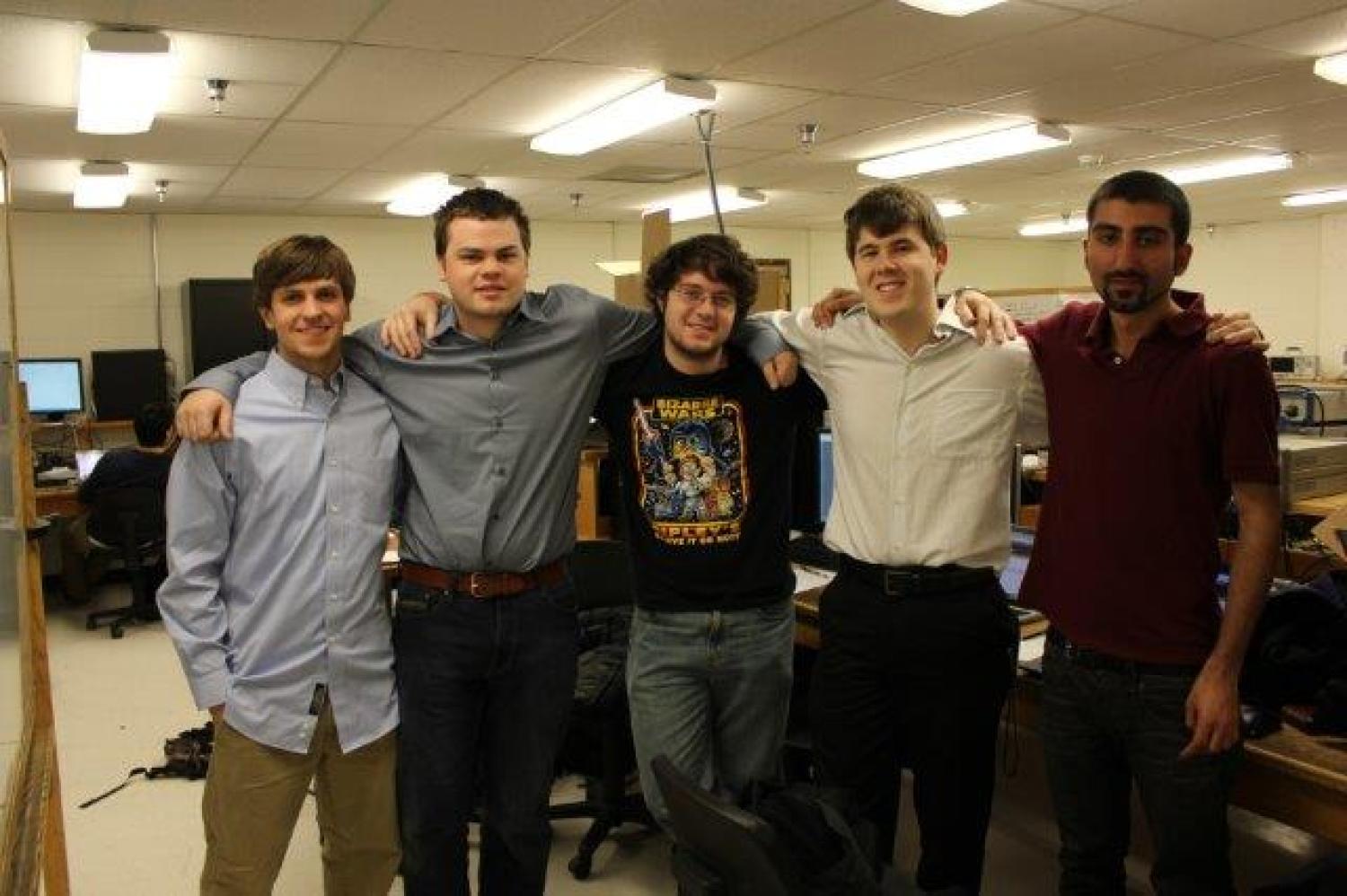Tesla Box

Team members:
- Stephen Bennett
- Devin Callahan
- Benjamin Kaslon
- Sushia Rahimizadeh
- Connor Shapiro
Under the mentorship of Dr. Zoya Popovic, we propose a project in the field of energy recycling and wireless power transfer technologies. It is our intention to design a system that is capable of efficiently harvesting microwave energy and managing the resulting power for storage or as a source. The proposed system consists of a rectangular cavity that is lined with conductive mesh and excited by two antennas placed on opposing sides of the cavity walls. One or more antennas arbitrarily located within the cavity will be responsible for receiving and rectifying the power. A circuit will be designed to optimally and dynamically load the antenna/rectifier, to store the energy, and/or to provide a source of power to a device.
Efficient point-to-point transmission of power has been an object of investigation for decades. The foundational works of Heinrich Hertz and Nikola Tesla contributed significantly to the progression of power transmission science. To eventually lead to the pursuits of power beaming and energy harvesting technologies, Hertz demonstrated directional, relatively high frequency free-space power transmission and Tesla demonstrated high power, omnidirectional power transmission. Wireless powering has since been an object of much interest, with work accomplished in areas including near-field inductive-coupling power transmission; far-field high power density, highly directive transfer of power, e.g., Earth-Satellite or Earth-Moon links; near-field directive power transmission, e.g., inter-satellite power transmission; and area-active RF Identification tags (RFID), with applications in wirelessly powering structural health monitoring systems and medical sensor platforms.
Our desired project is motivated by modern applications in the wireless charging of electronic devices, such as biomedical implants, laptops, cell phones, batteries, toys, etc., that are physically able to be placed inside practically sized cavities. This work will also provide a proof-of-concept design for far-field power transmission with applications in medical science and building monitoring sensor platforms.
Previous research provides a foundation for our proposed project, with work done in microwave power harvesting that has focused on efficient, broad-band rectification of microwave-frequency signals of low power densities and statistically varying polarizations. Findings from these works will be referenced and applied so as to achieve efficient power transfer within a closed near-field environment with relatively high power densities, spectral densities, and DC output loads.

